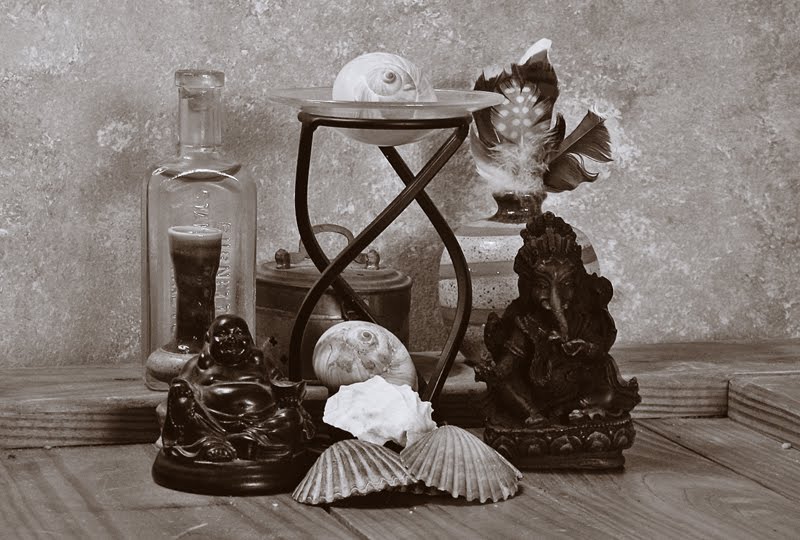
Johann Sebastian Bach, March 21, 1685 - July 28, 1750. Many in music refer to him as Papa Johann because he basically wrote the rules for composition in Western music, rules that are still followed now, even by the most "modern" of composers. Structure, counterpoint, harmonization; he defined it all. He may not have invented all the rules, but he codified the system and exemplified it in his prolific compositions. According to his Wikipedia entry, he was a:
composer, organist, harpsichordist, violist, and violinist whose sacred and secular works for choir, orchestra, and solo instruments drew together the strands of the Baroque period and brought it to its ultimate maturity. Although he did not introduce new forms, he enriched the prevailing German style with a robust contrapuntal technique, an unrivaled control of harmonic and motivic organisation, and the adaptation of rhythms, forms and textures from abroad, particularly from Italy and France.
His "Anna Magdalena Notebook" and "The Well-Tempered Clavier" are still used as practice books for piano students, while his "Goldberg Variations" serves as the ultimate challenge for concert pianists. His "Art of the Fugue" is still the last word on the form. His sacred cantatas are performed every Sunday in his ordering of them in the liturgical year in many churches, most notably Emmanuel Music, working in Emmanuel Episcopal Church in Boston and founded by the late Craig Smith, performing the sacred cantatas at the 10 AM service for the last 40 years. The man has left an impressive legacy.
Bach's music is a challenge to those who like to tinker, as well; his music tends to be used a lot by people who like to rearrange, reorchestrate, and in general fool with the classics. In Bach's music the most famous example of this is Arturo Toscanini's orchestration of the Toccata and Fugue in D minor; originally an organ piece, Toscanini arranged and orchestrated it for full symphony orchestra. It formed one of the main events in Disney's
Fantasia; here's the clip from the movie:
When Wendy Carlos revisited her Bach realizations for synthesizer on her Switched-On Bach 2000 in 1998, she included the famous toccata and fugue, which she'd decided not to tackle in her original 1968 recording Switched-On Bach. Mama Wendy (I call her that because of her pioneer status in the world of electroacoustic music) says her 1998 realization was inspired by Toscanini's orchestration.
Another famous arrangement of a Bach piece is Ian Anderson's - of Jethro Tull fame - take on Papa Johann's Bourée in E minor for lute. Anderson's version for flute is still a great memory for many of us veterans from the '60s and '70s. Here's a live performance from the 2002 Jethro Tull reunion tour.
And finally... I picked up a CD by Don Dorsey, an audio production consultant and arranger famous for his Disney productions, in a cut-out bin years ago; this one was from 1985 - Bachbusters, his own run at realizing Bach's music. Most of the CD was pretty pedestrian and far from Mama Wendy's or Isao Tomita's approaches to the classics, but his whimsical take on Bach's "Jesu Joy of Man's Desiring" always stuck with me. It was the perfect way to end the recording, and it's the perfect way to end this birthday tribute. Enjoy! And Happy Birthday Papa Johann!
































.jpg)


























